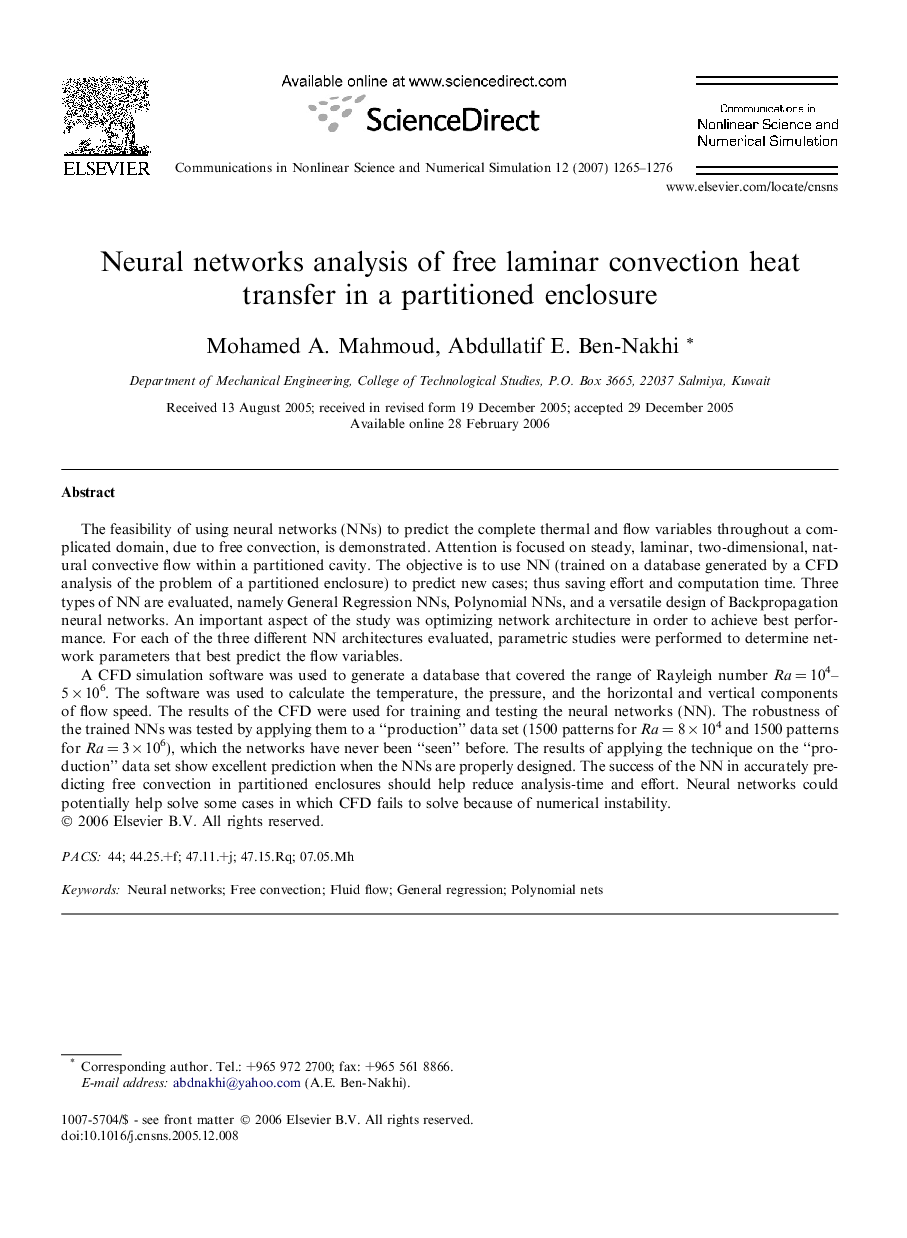| کد مقاله | کد نشریه | سال انتشار | مقاله انگلیسی | نسخه تمام متن |
|---|---|---|---|---|
| 759924 | 896499 | 2007 | 12 صفحه PDF | دانلود رایگان |

The feasibility of using neural networks (NNs) to predict the complete thermal and flow variables throughout a complicated domain, due to free convection, is demonstrated. Attention is focused on steady, laminar, two-dimensional, natural convective flow within a partitioned cavity. The objective is to use NN (trained on a database generated by a CFD analysis of the problem of a partitioned enclosure) to predict new cases; thus saving effort and computation time. Three types of NN are evaluated, namely General Regression NNs, Polynomial NNs, and a versatile design of Backpropagation neural networks. An important aspect of the study was optimizing network architecture in order to achieve best performance. For each of the three different NN architectures evaluated, parametric studies were performed to determine network parameters that best predict the flow variables.A CFD simulation software was used to generate a database that covered the range of Rayleigh number Ra = 104–5 × 106. The software was used to calculate the temperature, the pressure, and the horizontal and vertical components of flow speed. The results of the CFD were used for training and testing the neural networks (NN). The robustness of the trained NNs was tested by applying them to a “production” data set (1500 patterns for Ra = 8 × 104 and 1500 patterns for Ra = 3 × 106), which the networks have never been “seen” before. The results of applying the technique on the “production” data set show excellent prediction when the NNs are properly designed. The success of the NN in accurately predicting free convection in partitioned enclosures should help reduce analysis-time and effort. Neural networks could potentially help solve some cases in which CFD fails to solve because of numerical instability.
Journal: Communications in Nonlinear Science and Numerical Simulation - Volume 12, Issue 7, October 2007, Pages 1265–1276